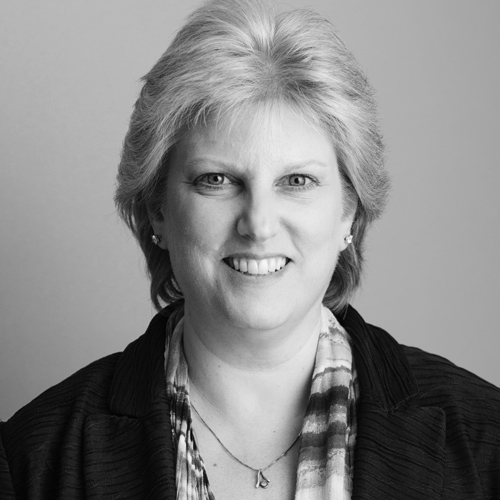When Novartis transferred its Canadian functions into the Latin American region, LatAm vice president and legal head Virginia Lazala recognized an opportunity. This was a unique chance to build connections and advance the workplace culture. It meant integrating a host of French-speaking Canadians into a team accustomed to speaking Spanish and Portuguese—“Portuñol,” Lazala jokes—and it meant mutual adjustments to differences in style.
When the newly consolidated team met for its first regional meeting, the initial step-sibling awkwardness was obvious. “At our regional meetings, the Latino culture is very vibrant,” Lazala explains. “We always have music, and we’re all out on the dance floor. When Canada came in, they were the only people sitting at the tables, not dancing.”
But Lazala wasn’t about to let that divide stand. Cultural integration isn’t necessarily a legal function, but her position affords a complete view of the region’s personnel. She interacts with everybody and facilitates connections across teams because it’s her natural inclination to do so. “I’m a connector. As a result, I feel compelled to bring people into the fold. We just had another region meeting, and everybody was out on the dance floor,” she says. “We’ve made progress. I don’t think the Canadians feel like outsiders anymore.”
In addition to cultural differences, Lazala must also be mindful of differences in healthcare law in the different regions. Canada and the Latin American countries offer national universal healthcare, and that means a new treatment takes a different journey to the patient than it would in the United States. In Brazil, for example, a medication can be approved for use before it’s approved for general reimbursement. Essentially, that makes it unavailable for 80 percent of Brazilians using the free national public healthcare system, who would have to pay full price out-of-pocket. For Novartis, the next objective after safety approval is to make an effective case for reimbursement, so that the treatment is as widely available as possible.
The organization also faces unique challenges raising local awareness of their products. Because every country has unique regulations on the marketing of drugs, Novartis associates have to develop specific strategies and tactics to raise awareness among caregivers and patients. The market access groups and regulatory affairs groups collaborate with patient advocacy groups and the government to lobby for reimbursement.
“Legal provides support to those departments, but we also balance the laws and ensure that what we’re doing is compliant. We cannot, in that region, promote directly to patients,” Lazala says.
Direct-to-consumer advertising is permitted only in the United States and New Zealand. Raising awareness through workshops and educational functions without advertising can be a challenging maneuver, and should they fall on the wrong side of the law’s distinctions, the consequences might include unpleasant publicity, regulatory fines, and withheld approval.
Given the government’s expanded role in the administration of care, the process can be slower than it is in the United States; political corruption and volatility can add complications and further delays, Lazala says. In Brazil, for example, a recent corruption scandal ended the presidency of Dilma Rousseff, resulting in a new administration and evolving public political attitudes. Well-monitored and well-maintained relationships are key to navigating those transitions, Lazala says. “You have to stay involved with the local lawyers and ensure that they’re connected with industry, with health authorities, with reimbursement authorities,” she says. “You have to keep a finger on the pulse.”
Another challenge has been the presence of counterfeit medications. Some Korean and Indian outfits produce copies that are not generics but deceptive mimicries, which lack the real prescription’s active ingredients. They then sell the product to local companies, who present it to patients as an approved copy—but lacking an active ingredient—copies provide no actual treatment.
Novartis litigates those cases as matters of patient safety as well as intellectual property. But many counterfeiters operate in obscure settings, so they can be difficult for regulators and legal professionals to track down. In the meantime, Novartis also endeavors to keep the public aware. “We work closely with our therapeutic integrity team to educate patient advocacy groups, the government, and the public. The overarching goal is to protect the patient,” Lazala says.
Because the mission of Novartis at large is to connect patients with the treatments they need, Lazala stays willing to contribute and connect across multiple functions. When she sees an opportunity to share knowledge or initiate a useful relationship, she doesn’t hesitate to act. Most lawyers, she observes, are less inclined to do so.
“Most lawyers aren’t that way, but the more successful ones in global and regional functions are,” she says. “I try to impart that on my people and impress upon them our ability to be connectors and provide value due to our position in the organization.”
After more than fifteen years in the organization, she’s eager to use her position to help others think big, learn, and move their careers forward. Novartis’ culture supports that. She’s seen stingy, counterproductive talent disputes in other companies. But at Novartis, opportunities are plentiful, and teams are mutually supportive.
Everyone owns their own career, and one of Lazala’s duties as a leader is to help her staff develop and move forward. “I try to get my team out of their comfort zones. Being in this role, I know what the possibilities for development within our company are, and I can share that with others. I can help them think bigger.”
As for the legal contributions, she reminds herself and her team to prioritize the mission over the daily minutiae and potential obstacles. “I want to have my people step up and be the business partners we should be so we’re all working toward one goal: getting our treatments to the right patients, and doing it as one team.”
Photo: Paul A. Zalewski

